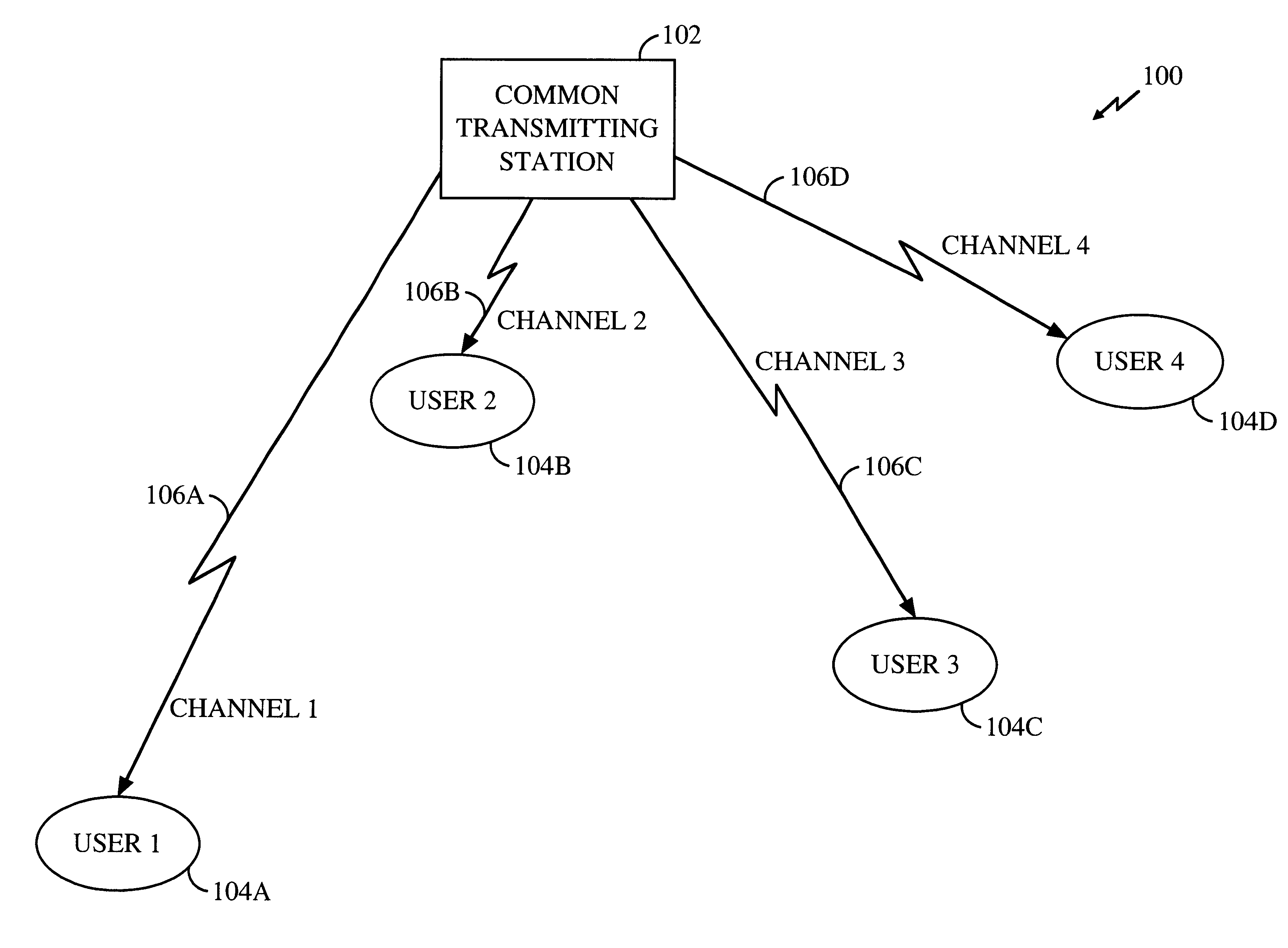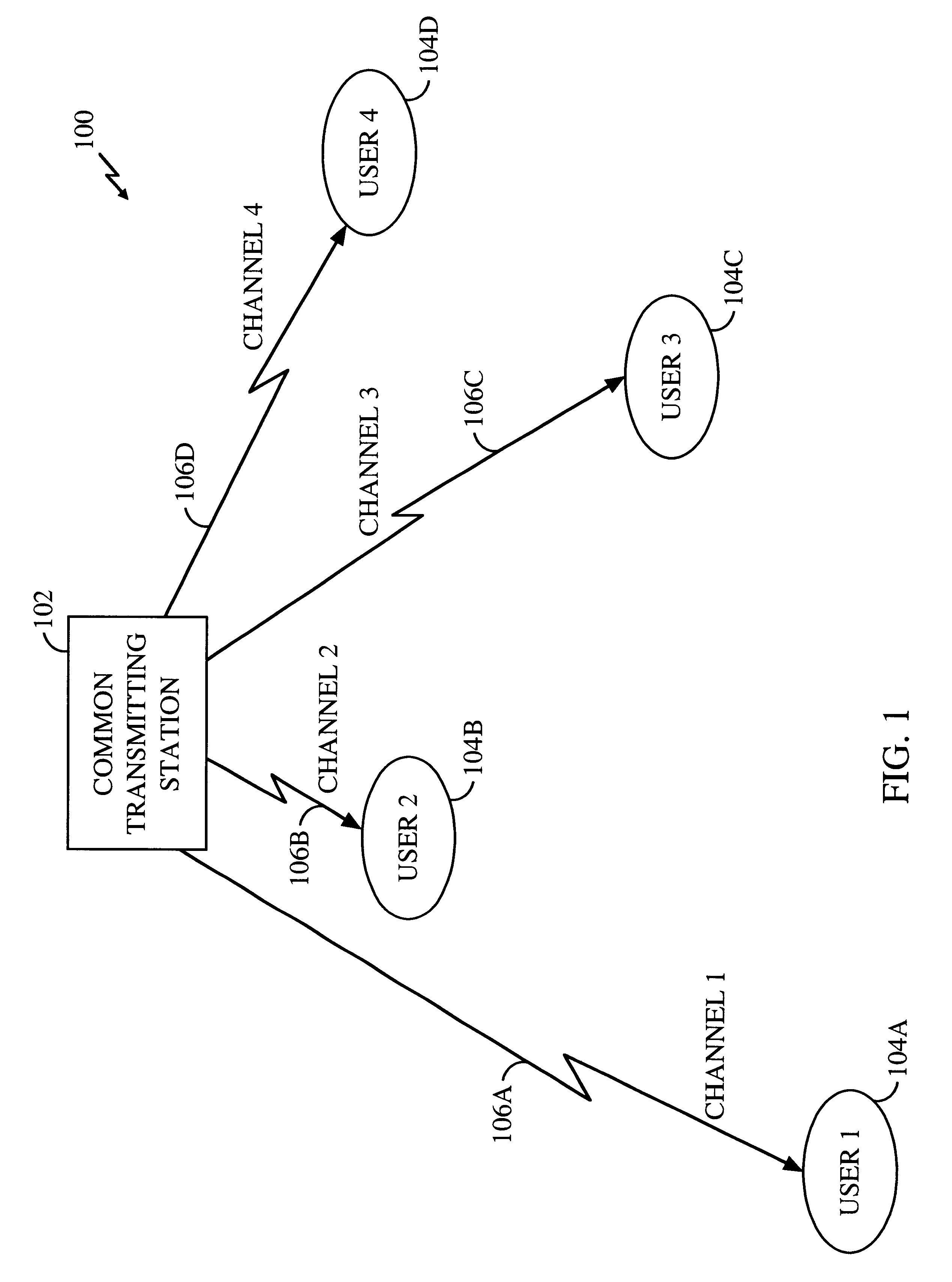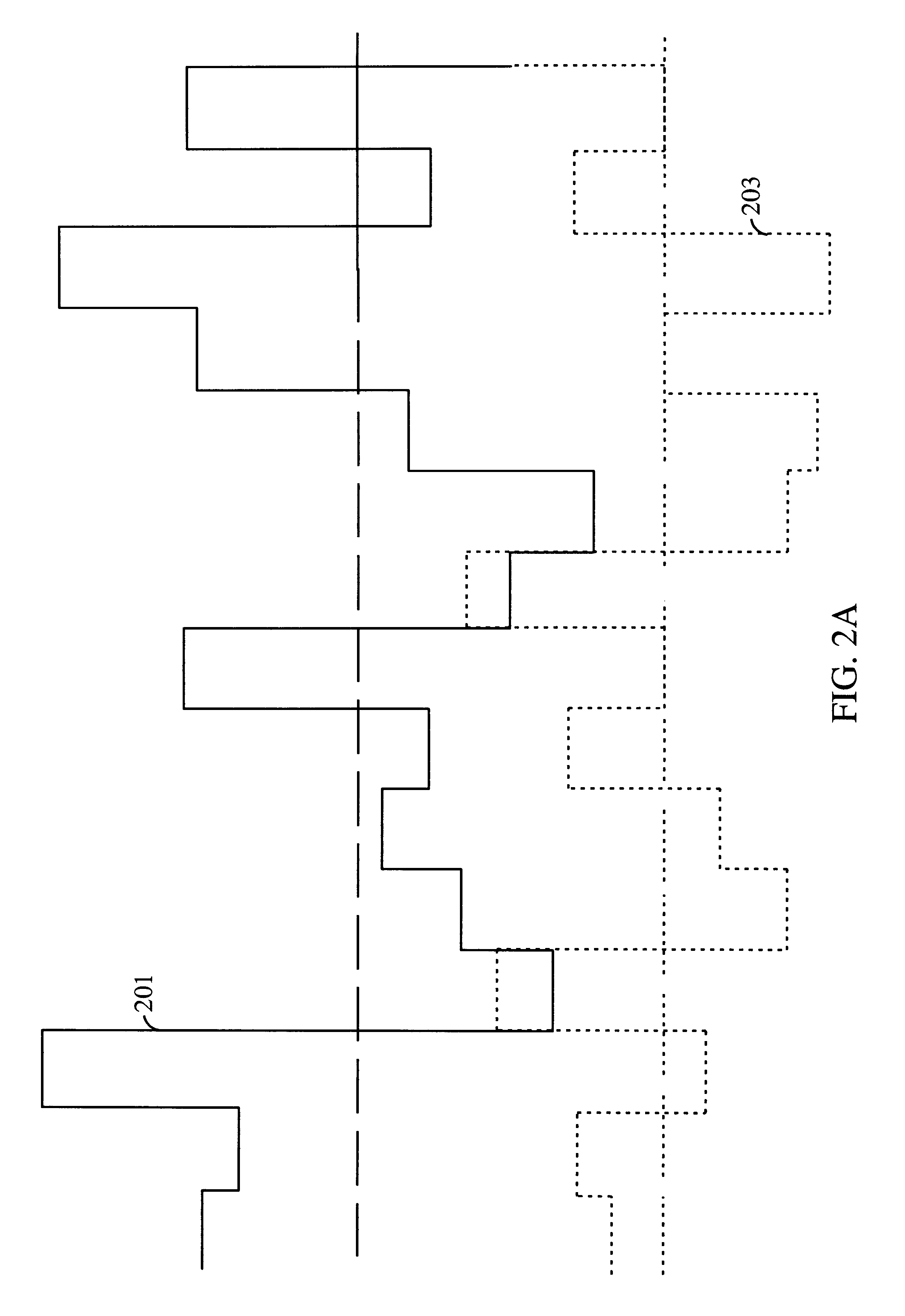Transmitter directed code division multiple access system using path diversity to equitably maximize throughput
a technology of path diversity and transmission code, applied in the field of communication systems, can solve the problems of insufficient power to transmit data, deficient scheme in which equal access is provided to each user, and users receiving little access to the system
- Summary
- Abstract
- Description
- Claims
- Application Information
AI Technical Summary
Problems solved by technology
Method used
Image
Examples
Embodiment Construction
Functional Overview
FIG. 1 is a simplified block diagram of a communication system 100 in accordance with the presently disclosed method and apparatus. The system 100 includes a common transmitting station 102 and a plurality of users 104. In FIG. 1, four such users 104 are shown. However, it will be understood by those skilled in the art that any number of users 104 may be included in the system 100. Furthermore, in cases in which one or more of the users 104 are mobile, the number of users 104 in the system may vary over time. Each user 104 can be considered as a receiving element of a distributed receiver that includes all, or some, of the users 104. However, the users 104 of the presently disclosed method and apparatus need not combine, or provide to a common end user, the data that is received by each user 104. Accordingly, the receivers 104 may also be considered to be completely independent.
Each user 104 is capable of communicating with the common transmitting station 102 over...
PUM
 Login to View More
Login to View More Abstract
Description
Claims
Application Information
 Login to View More
Login to View More - R&D
- Intellectual Property
- Life Sciences
- Materials
- Tech Scout
- Unparalleled Data Quality
- Higher Quality Content
- 60% Fewer Hallucinations
Browse by: Latest US Patents, China's latest patents, Technical Efficacy Thesaurus, Application Domain, Technology Topic, Popular Technical Reports.
© 2025 PatSnap. All rights reserved.Legal|Privacy policy|Modern Slavery Act Transparency Statement|Sitemap|About US| Contact US: help@patsnap.com



